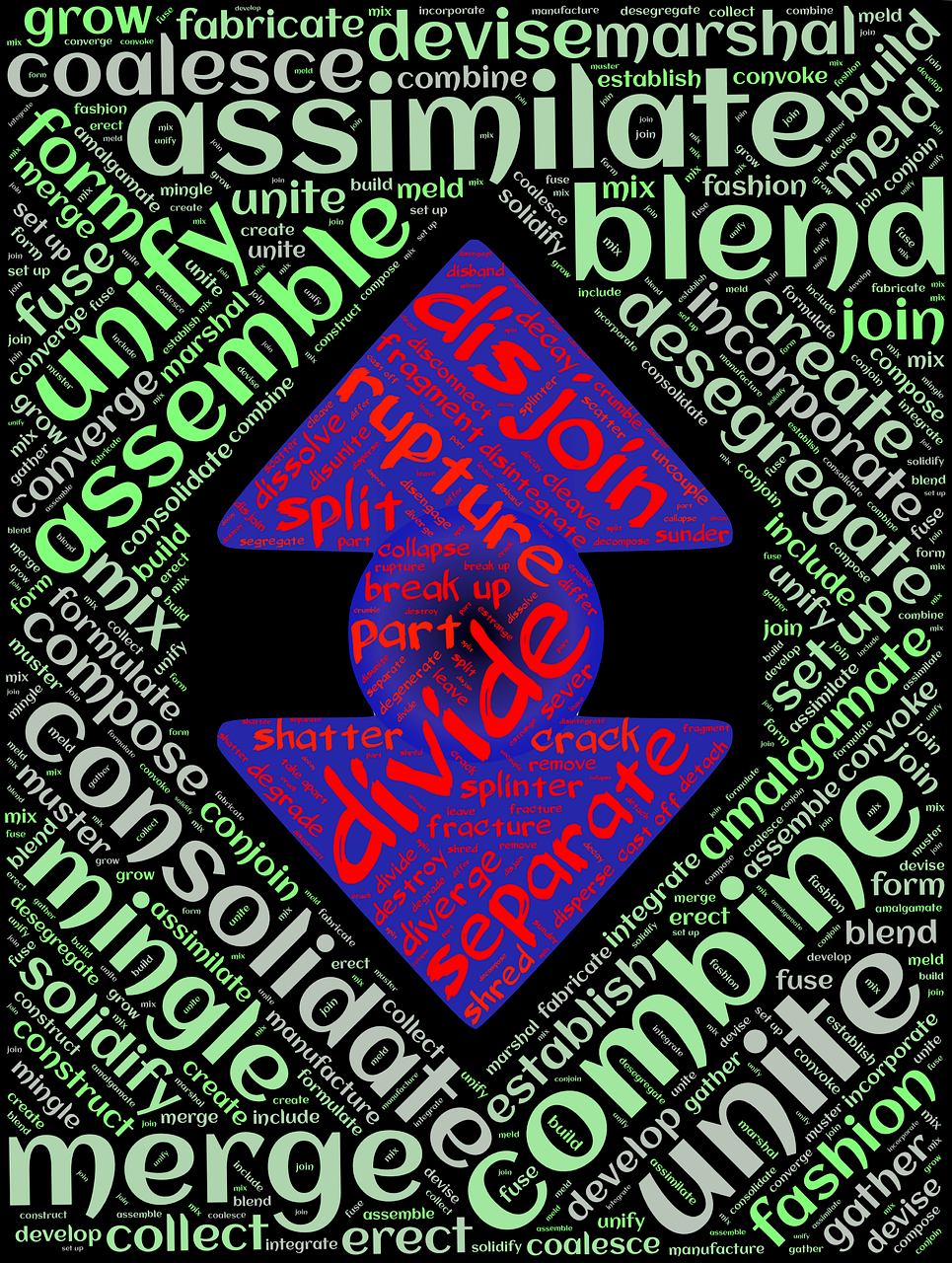Dissociation
- Susan Stubbings

- Feb 23, 2024
- 4 min read

Understanding Dissociation
What is it? - Dissociation can be thought of on a continuum from day-dreaming and automatic pilot at one end to developing what some referred to in the past as multiply-personalities or Dissociative Identity Disorder (DID) as it is known today.
First let’s be clear - Dissociation is not a mental health issue such as schizophrenia, borderline personality disorder nor is it psychosis although it can lead to both mental health issues and/or psychosis if over utilised.
Let’s be even clearer - Dissociation is a direct result of trauma and being traumatised for example childhood neglect, starvation, bullying, mental, emotional or physical abuse, rape, physical assault any situation that leaves the victim feeling they are trapped or can't escape the situation they are in.
It is a creative coping strategy a Child activates to survive the effects of being overwhelmed when faced with overpowering, painful and terrifying events; the child is neither able to understand nor cope with.
Such traumatization leaves the Child protecting her/his self through the unconscious dynamics of dissociation. The 'unconscious' part is important because the Child doesn't have control over their minds dynamics.
This is not a choice for the Child who is left unprotected by the adults in her/his/their life, to the point the Child feels scared, frightened or 'as if' they are about to die most of the time. The younger the Child when abuse happened the more they are likely to utilised dissociation because The dynamics of the mind take over to minimize the damage done to the Child's mental processors, psychological, emotional and spiritual worlds.
It is amazing how the mind can respond when it is in survival mode. Whilst science and medicinal have learnt vastly and developed some understanding, as human beings we do not have the full extent to the power of our minds! We have still so much to learn!
"Dissociation" is a creative coping strategy a Child activates to survive the effects of being overwhelmed when faced with overpowering, painful and terrifying events; which the child is neither able to understand nor cope with. Such traumatisation leaves the Child protecting her/his self through the dynamics of dissociation".
There are thought to be five main categories of dissociative disorders:
Depersonalization experiences out-of-body feelings, a loss of feelings in parts of their body or have a distorted view of their own body. Characterized by the feeling or sense of being detached from one’s own body and people may tell you they watch their life from outside like a movie. People with this may say they have difficult with concentration, memory and perception.
Dissociative amnesia experience gaps in their memories of what actually happened because it is far too painful to remember, it is different to normal forgetting it is one of the most common of all the dissociative disorder. This state may last from days to years.
Dissociative fugue this is where a person suddenly ups and leave their home and travel to some far off town, they may not be able to recall their past and may even assume a new identity and appears normal to on-lookers.
Dissociative Identity Disorder or DID as it is now known. This is the most severe manifestation of dissociation; it is characterized by two or more distinct personalities states which take control of the person’s behaviours. An average of 2 to 4 personalities/alters are present at diagnosis, with an average of 13 to 15 personalities emerging over the course of treatment (Coons, Bowman & Milstein, 1988; Maldonado et al., 2002). Environmental events usually trigger a sudden shifting from one personality to another (Maldonado et al., 2002). (retrieved from http://www.isst-d.org/default.asp?contentID=76#typesdd
The most common dissociative disorder presented in my counselling practice is known as Dissociative Disorder Not Otherwise Specified (DDNOS). DDNOS is characterized by partial dissociated self-states but do not fit the known criteria for DID or the other major presentations.
A person with this disorder will not have two or more distinct personalities therefore no switching; they will not have full amnesia and do not have distinct alters. Many don't know they are utilising dissociation, they may experience a trance like state which is episodic or have disruption to their usual integrated psychic functioning, they may 'zone out', 'switch off' or simple let the fear go over their head whilst they appear not to be listening or engaging in what is happening around them.
A person utilizing this type of dissociation may have built an imaginative safe place in their minds which they use as an anchor when times get difficult and they are unable to cope, a place where they feel safe and secure. Although they may not be able to describe such a place to you or even themselves until they engage on the path to discovery anbd peace!
DID is a confusing disorder whether this is for the person who utilizes dissociation for survival or the people who observe the person in 'different zones'. Many people utilize their childhood coping mechanisms as they travel through adulthood and a person utilizing DID is no different.
Many of our adulthood strategies are outdated and whilst they served us extremely well as a Child they may now be interfering with our daily living and/or relationships. You may be experiencing other mental health issues such as depression, anxiety and you may also still be affected by your original trauma and all that brings with it.
If you would like to explore and transform your Childhood trauma/s and/or your defense mechanisms please contact me to discuss your needs and to gain professional, experienced and compassionate support.
Contact me at pendulumofpeace8@gmail.com or telephone, text, WhatsApp message on 07867938630
Lets connect and realise the possibilities of your potential.


.jpg)




Comments